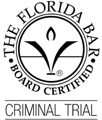Florida law requires the collection of DNA samples from every person charged with or convicted of a felony and from many defendants convicted of a special class of misdemeanors. DNA is now one of the most powerful forms of evidence used in American courts to identify, convict, and exonerate criminal suspects.
Do you understand what DNA is and how Florida’s law for collecting DNA samples applies to you? At Stechschulte Nell, Attorneys at Law, we believe in ensuring that every client has a full understanding of the law and how it affects their case. No defendant should be confused about any aspect of the evidence being presented against them by prosecutors.
This blog post explains some of the key facts you should know about the DNA laws in Florida:
- What is DNA?
- How does law enforcement use DNA?
- Who must give a DNA sample to authorities in Florida?
- Can you get your DNA removed from the DNA database in Florida?
What Is DNA?
DNA is a molecule found in virtually every cell of a living organism that determines how that organism will develop and function. DNA is the common term for the molecule, but it is known in science as deoxyribonucleic acid. It is also the primary source of hereditary characteristics.
Every person’s DNA is unique.
Because every individual’s DNA is unique and because a full strand of DNA is present in nearly all of the cells in our body, forensic science has developed a method of analyzing the tiny cells that we leave behind when coming in contact with other people and objects. Through this extremely complicated but well-established scientific method, a cell of tissue left behind by someone can be used to determine their identity.
Who Must Supply DNA Sample Under Florida Law?
Florida Statute § 943.325 requires DNA samples to be collected from every person considered a “qualifying offender,” including:
- Every person committed to a county jail, under the supervision of the Department of Corrections, or committed to or under the supervision of the Department of Juvenile Justice,
- Every person convicted of any felony or attempted felony in Florida or of a similar offense in another jurisdiction,
- Every person arrested on a felony charge in Florida, and
- Every person convicted of a misdemeanor violation of stalking, voyeurism, an offense related to obscene or lewd materials, computer pornography, observing or recording private dressing rooms, or an offense found to have been committed for the purpose of benefiting, promoting, or furthering the interests of a criminal gang.
Failure to Follow Collection Protocol No Defense
Florida law directs that DNA be collected in accordance with a protocol developed for the purpose by health officials, but a defendant may not prevent the use of their DNA in a prosecution merely because their DNA was not collected in compliance with the established protocol.
Nor can a person whose DNA was erroneously entered into the DNA database use the error as grounds to suppress the evidence in a subsequent prosecution.
Can You Get Your DNA Removed from the Database?
If your DNA was collected as a result of a conviction that was reversed on direct appeal or was vacated by postconviction relief, or the charges for which you were arrested were resolved by a “no information filed” or “Null Prosequi,” then your DNA can be removed from the database.
You must present a certified copy of the documents attesting to the Null Prosequi or a final court order that states the reversal or dismissal of each charge.
How Does Law Enforcement Use DNA in Florida?
Along with every other state in the U.S., Florida enacted laws requiring every person charged with or convicted of a felony must supply a DNA sample as part of their processing. The same holds true for people convicted of certain misdemeanors.
Once the DNA sample is collected in a reasonable manner by an authorized person, the sample is coded and entered into a nationwide DNA database called the Combined DNA Index System (CODIS) maintained by the FBI.
The stored information stays on file for the purpose of comparing any DNA samples collected from crime scenes with those on file to determine if the unknown source of the crime scene DNA is someone who already has a DNA profile in the CODIS system.
Clearing Innocent People Who Were Wrongly Convicted
DNA evidence has developed into a powerful form of evidence relied upon by juries, perhaps more confidently than other forms of traditional evidence. Eyewitness testimony has been shown to be less reliable than once thought, as witness identification has been contradicted by DNA evidence.
Hundreds of people convicted of serious crimes based on eyewitness identification have since been exonerated by DNA test results performed years after their original convictions. Many of these wrongly convicted men and women have spent decades in prison before they were cleared by DNA evidence.
Closing Cold Cases
While DNA clears many prison inmates of the crimes for which they were wrongly convicted years earlier, DNA evidence is likewise identifying others whose DNA was found at crime scenes years before DNA evidence was advanced enough to be useful.
Cold cases from as long as 40 years ago are being reexamined. While DNA was not a tool available to law enforcement detectives at the time, decades-old cases often involved evidence collected at crime scenes that remained in custody until today.
Clothing, tissue samples, blood stains, and even semen from unprocessed rape kits have been reexamined using the newest scientific techniques. With the growing number of DNA samples collected by police and prisons around the country, the national database is finding that the unknown person who left biological evidence at an old crime scene has since had their DNA entered into the CODIS system because of another arrest or conviction.
Using DNA Family Genealogy to Identify Suspects
Another more recent development in the way DNA is used by law enforcement is by searching commercial genealogy databases for relatives of the DNA source. Here’s how this process works.
A police department will have a sample of DNA that does not match any sample on file in the CODIS database. But many family members submit their DNA samples to companies like 23andMe, Family Tree DNA, and others. These commercial DNA databases often produce a list of possible relatives of the person whose DNA was collected at the crime scene but whose identity is unknown.
Close relatives of an unknown crime suspect share very similar DNA. While not a match to the suspect, the relative’s DNA sample is close enough for detectives to look closely for suspects in the family of the person whose DNA was similar to the crime scene DNA.
This method has been used to identify and convict the BTK killer in California (a former police officer), the suspect in a series of murders from 31 years ago in Ohio, and the accused defendant in the murder of four Idaho college students in November 2022.
Read More > How is Evidence Gathered During a Criminal Trial in Florida?
Tampa Criminal Defense
Florida’s DNA laws are critical to the criminal justice system. These laws provide guidance to both prosecutors and defense attorneys, ensuring that each person who is accused of a crime receives the fair and just treatment they deserve.
Furthermore, DNA evidence has been used successfully in many cases to support an individual’s innocence. As the use of this technology continues to evolve, it is important that all individuals involved in criminal proceedings have access to this invaluable resource.
The use of DNA evidence has given defense attorneys a powerful new tool when it comes to defending their clients against wrongful convictions or charges.
Our attorneys at Stechschulte Nell Law are on your side. If you have been charged with a crime, call 813-280-1244 for a case today.









